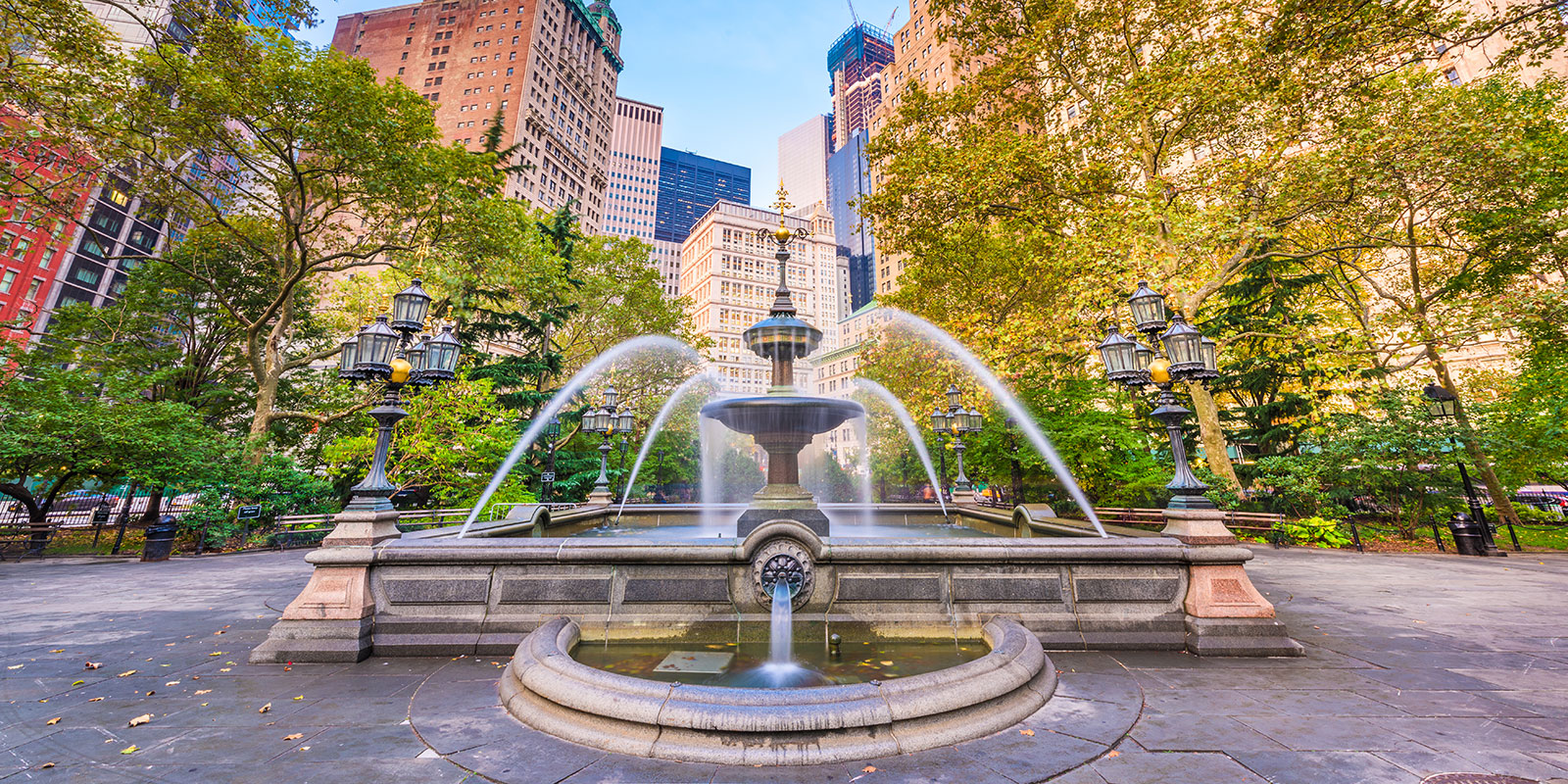Civic Center is the neighborhood of New York’s city, county and federal governments. It’s organized around two parks: City Hall Park and Foley Square, and the NYPD headquarters of the New York City Police Department.
The neighborhood is sacred ground because it was New York City’s early African cemetery.
New York City Hall
New York City Hall is the ceremonial home of the Mayor’s Office, Public Advocate, New…
City Hall Park
City Hall Park is the public park around New York City Hall in Manhattan’s Civic…
Foley Square
Foley Square is the home of Thomas Paine Park. It’s all cement and mostly popular with skateboarders who like to shred the park’s handrails.
The square is surrounded by important places including: African Burial Ground National Monument, the Internal Revenue Service, Jacob K. Javits Federal Building, the City Clerks Office (where you can get married), and the iconic New York County Supreme Court, Thurgood Marshall United States Courthouse and Daniel Patrick Moynihan US Courthouse.
Chinatown to the northeast is a popular lunch spot.
Triumph of the Human Spirit

There is a meaningful sculpture in the fountain at Thomas Paine Park. “Triumph of the Human Spirit” (2000), by Dr. Lorenzo Pace, is dedicated to the African American experience.
The raised sword’s forms are based on the Chiwara antelope masks of the Bambara nation of Mali, West Africa. The nation is also in Guinea, Burkina Faso and Senegal.
The Chiwara masks are used in traditional dances which represent the blessings that cultivation brought to the people. The traditional celebration also acknowledges the contributions of farming women to society.
The sword’s crossguard is designed in the shape of a boat. It reminds us of an ancient Egyptian reed boat, but is a reference to the infamous Middle Passage from the time of White human slavers (Spanish, Portuguese, Dutch, French and English).
The boat shape also represents an Indigenous American canoe. That is a wise metaphor. Everything that African Americans have suffered, Indigenous Americans have suffered too.
African Burial Ground National Monument
In 1991, construction workers excavating the Ted Weiss Federal Building uncovered a cemetery. It was New York City’s early African burial ground. It is estimated that between 10,000-20,000 people were buried there from 1626 to 1794. It had been forgotten under the growing city.
That’s sort of the story of being Black, Indigenous or Latin. Our contributions tend to be forgotten, but we helped build New York City and America.


